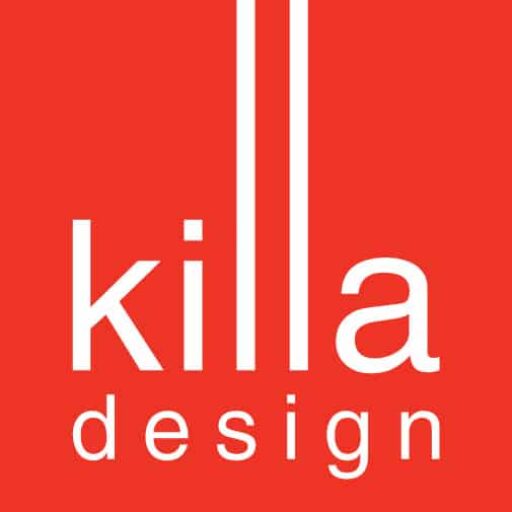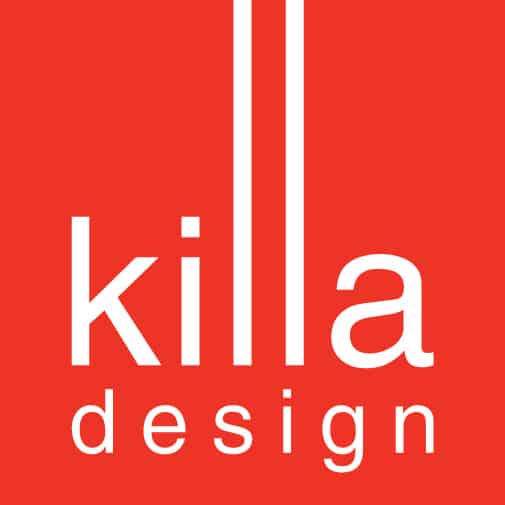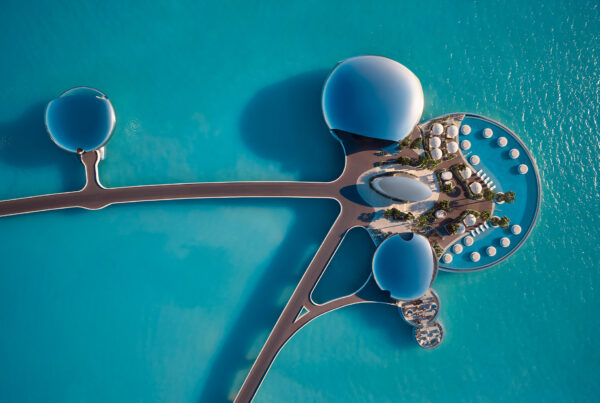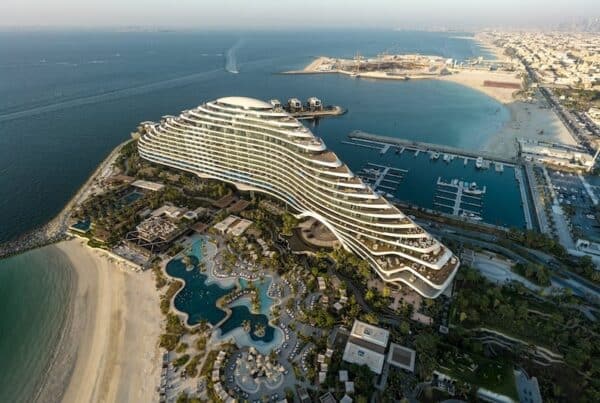The newest addition to the city’s coastal district of landmark hospitality completes a trilogy of iconic Dubai hotels inspired by the sea.
June 2025

Step inside Jumeirah Marsa Al Arab, Dubai’s new luxury lifestyle destination that mirrors the city’s dynamic spirit.
Along Dubai’s ever-evolving shoreline, a striking composition of architecture emerges: a triad of buildings that narrates the city’s transformation through design and hospitality. The Jumeirah Burj Al Arab, with its willowing sail form, remains a global emblem of opulence and engineering bravado; the Jumeirah Beach Hotel, with its dynamic, wave-like shape, evokes movement and memory; and now, Jumeirah Marsa Al Arab completes this ensemble with a sinuous design that anchors Jumeirah’s story of combining contemporary refinement and cultural nuance. It is designed by the Museum of the Future architects, Killa Design.
“While the design of Jumeirah Marsa Al Arab is inspired by the sleek elegance of superyachts, its soul is undeniably Emirati, with subtle yet meaningful references woven throughout — from the architectural details to the carefully selected materials that echo the beauty of the desert and the sea.” adds Harun Dursun, Managing Director, Jumeirah Marsa Al Arab.
“Every guest is welcomed with the warmth, generosity, and joy that are hallmarks of the Jumeirah brand. Whether in the hotel or its residences, Jumeirah Marsa Al Arab offers a sense of familiarity and serenity, creating a home away from home in a buzzing city.”
Together, these three landmarks do more than define a skyline and shoreline; they tell the story of a journey. One that spans from the visionary roots of the city’s early ambitions to its current role as a hub of architectural innovation. In dialogue with one another, they form a coastal district that’s both deeply rooted in context yet boldly global in outlook – where form, function and fantasy coalesce into a singular experience of place.
Read Our Interview With Jumeirah Marsa Al Arab Architect Shaun Killa
With the brief in mind, what was the design vision for Jumeirah Marsa Al Arab? How did you come up with this concept?
When we were asked to come up with a design for Jumeirah Marsa Al Arab, one of the first criteria was that it needed to complement Jumeirah Burj Al Arab. So, not only did we have to come up with a design that respected this iconic property, but also one that would complete and complement the trilogy of hotels, including Jumeirah Beach Hotel. We had to first decide what story we wanted to tell through our design, so we examined the properties along the beachfront to make sure that our narrative fitted in seamlessly with the existing properties. This is where we conceptualised our design story, one that would originate at Madinat Jumeirah and end at Jumeirah Marsa Al Arab. It depicts the evolution of design, starting with Jumeirah Al Qasr and Jumeirah Mina Al Salam and their traditional architecture, moving on to Jumeirah Al Naseem’s classic design and next transitioning to modern architecture at Jumeirah Burj Al Arab and Jumeirah Beach Hotel. The design story ultimately concludes at Jumeirah Marsa Al Arab, where we look at what the future holds through futuristic yet more fluid or sinuous architecture.
With the world’s ultra-yachts as the inspiration, we wanted to create the same sense of being in water through curvatures, almost like a yacht going out to sea. Previously we didn’t have the software to create double formed designs, so modern lines had curvature but were almost 2D and sharp edged. With the technology and design software we have today we are able to realise that fluidity and create double curved forms. The residence building slopes in one direction and the other curves back on itself to create a dynamic movement. It was designed to give a sense of the building moving in a direction – although stationary, the eye creates this movement.
Our next component was to ensure that the hotel allowed views through to the Jumeirah Burj Al Arab, which is why we decided to split the buildings to showcase the iconic view.
How is the hotel architecturally unique? What are some less obvious design features here that make it special?
The arch under the hotel is one of the most unique design aspects of this project. It represents the entire guest drop-off experience. We wanted to create a unique guest experience where the moment you drive up to the hotel and get dropped off, you are presented with this beautiful view where the arch opens to frame Jumeirah Burj Al Arab and the design journey begins.
Another unique area is the D-marin marina. The hotel is flat by the marina with extensive resort landscaping on either side to represent a luxury yacht heading out to sea. As I love the sea so much, I also felt that there was an opportunity to utilise the space in the marina to create a series of stunning villas. Originally the marina walls had the rock revetment on the outside, concrete on the inside and sand in the middle – which was enough for parking and a two-way road next to it. To create the perched villas, we moved the rock revetment out by 6 metres and filled it with sand to build the nine villas, creating an extension of the whole marina experience.
The penthouses at the top of the residences have a full 360-degree experience; as the design slowly peels away it presents a cascading prowl of a luxury ship and the balconies provide for the perfect view.
When we first came up with the design of the hotel, we could’ve easily combined it with the residences. However, we were very conscious that Burj Al Arab is such a significant icon that we did not want to block tourists from the view from the beach. We spent a tremendous amount of time taking photos from different angles and GPS positions to ensure we were giving guests and visitors the best possible viewpoint. This is why the hotel and residences are set so far apart, to allow for that viewing experience of the iconic Jumeirah Burj Al Arab.
Did you incorporate sustainable methods within the design?
We used the balconies as a shading device to the glass; the wraparound balcony experience means that the glass facade very seldom has direct sunlight on it. In doing this we reduced the heat load on the building, lowering the cooling load per sqm by up to 40%. All the mechanical and electrical systems have been specified as low energy recovery systems and work together to reduce the overall energy consumption.
If Jumeirah Marsa Al Arab was a movie set, what movie do you see being filmed there?
I would love to see a James Bond movie being filmed at Jumeirah Marsa Al Arab. The arch of the hotel with Jumeirah Burj Al Arab against a glowing sunset would make for the perfect backdrop as he pulls up in his Aston Martin.






